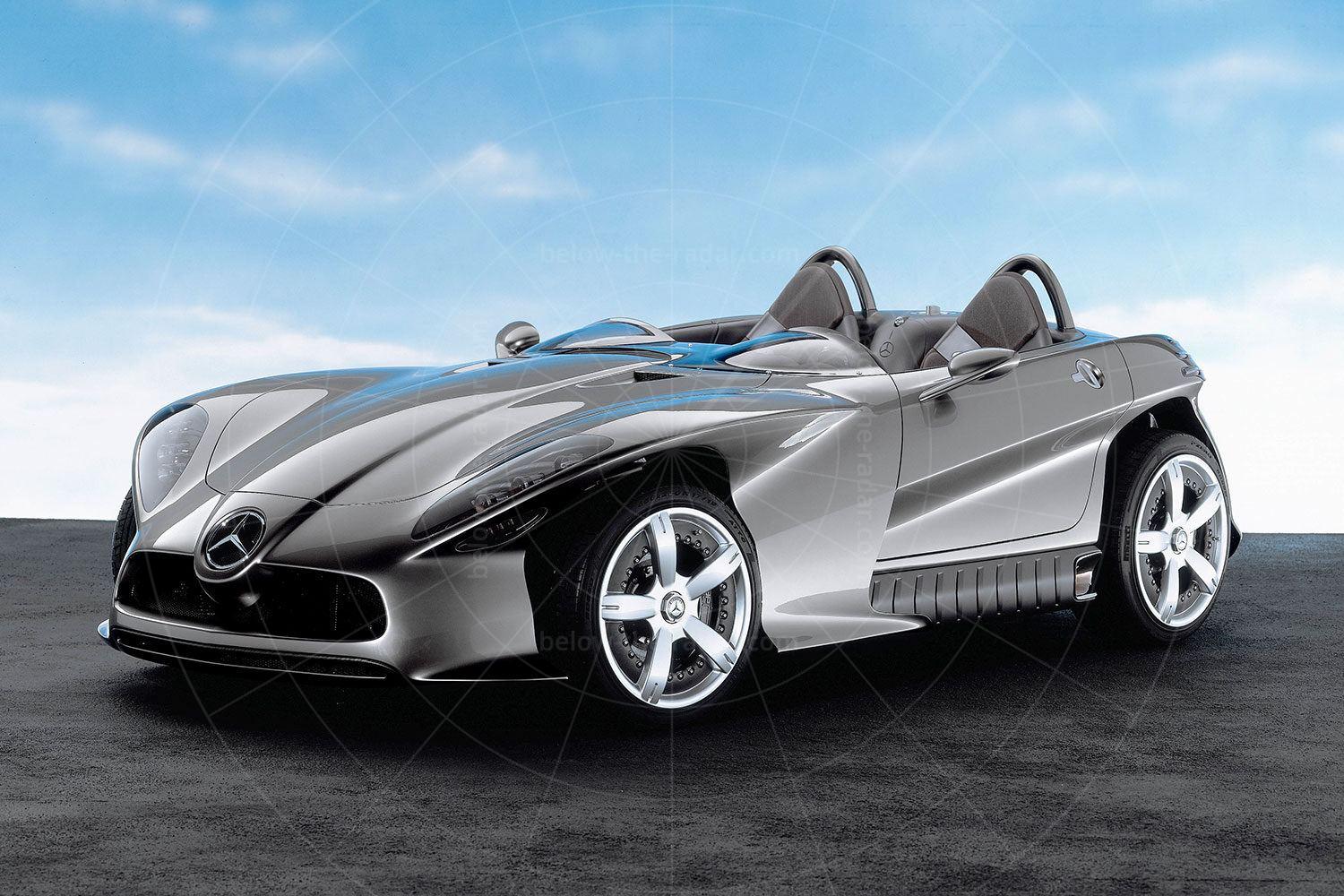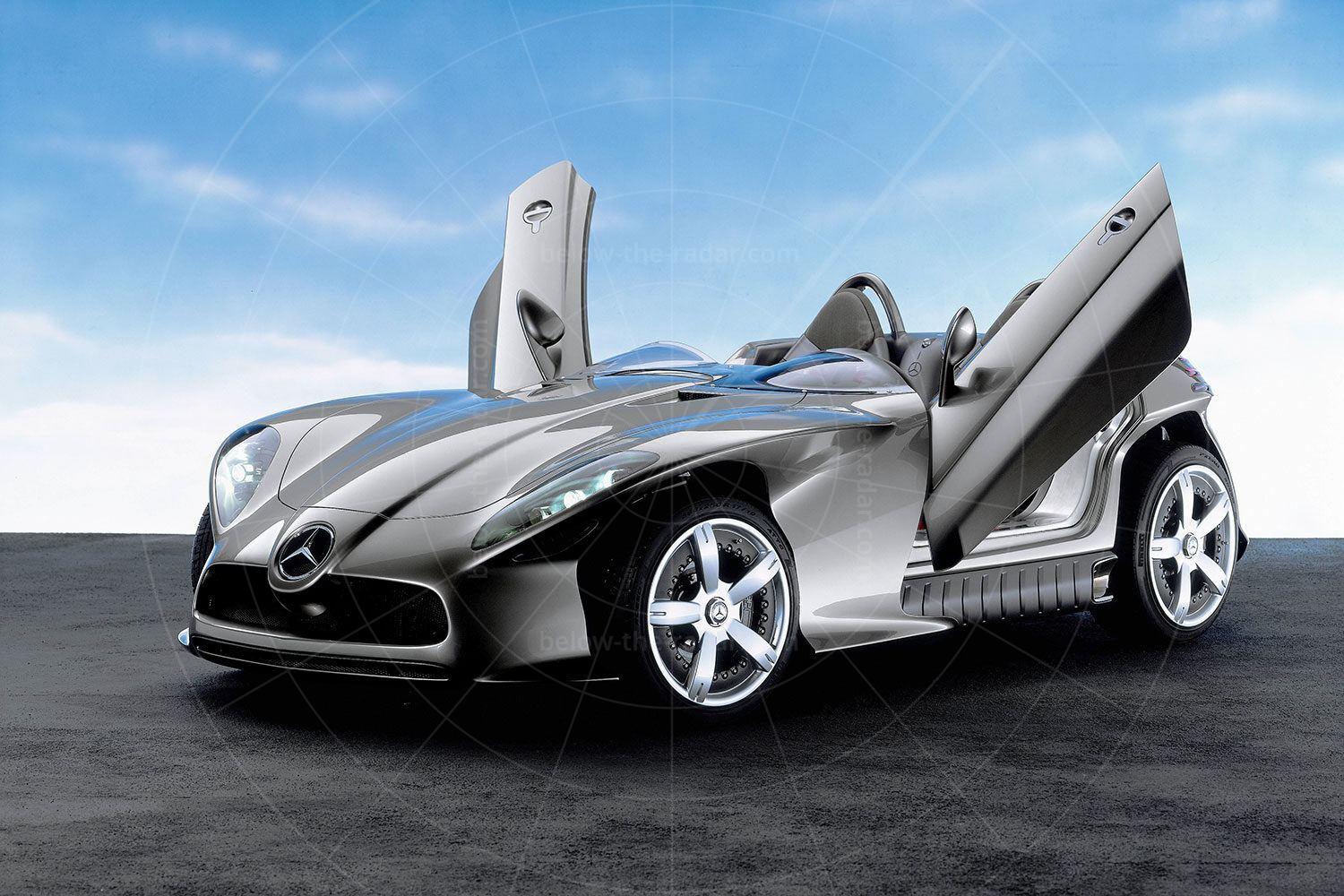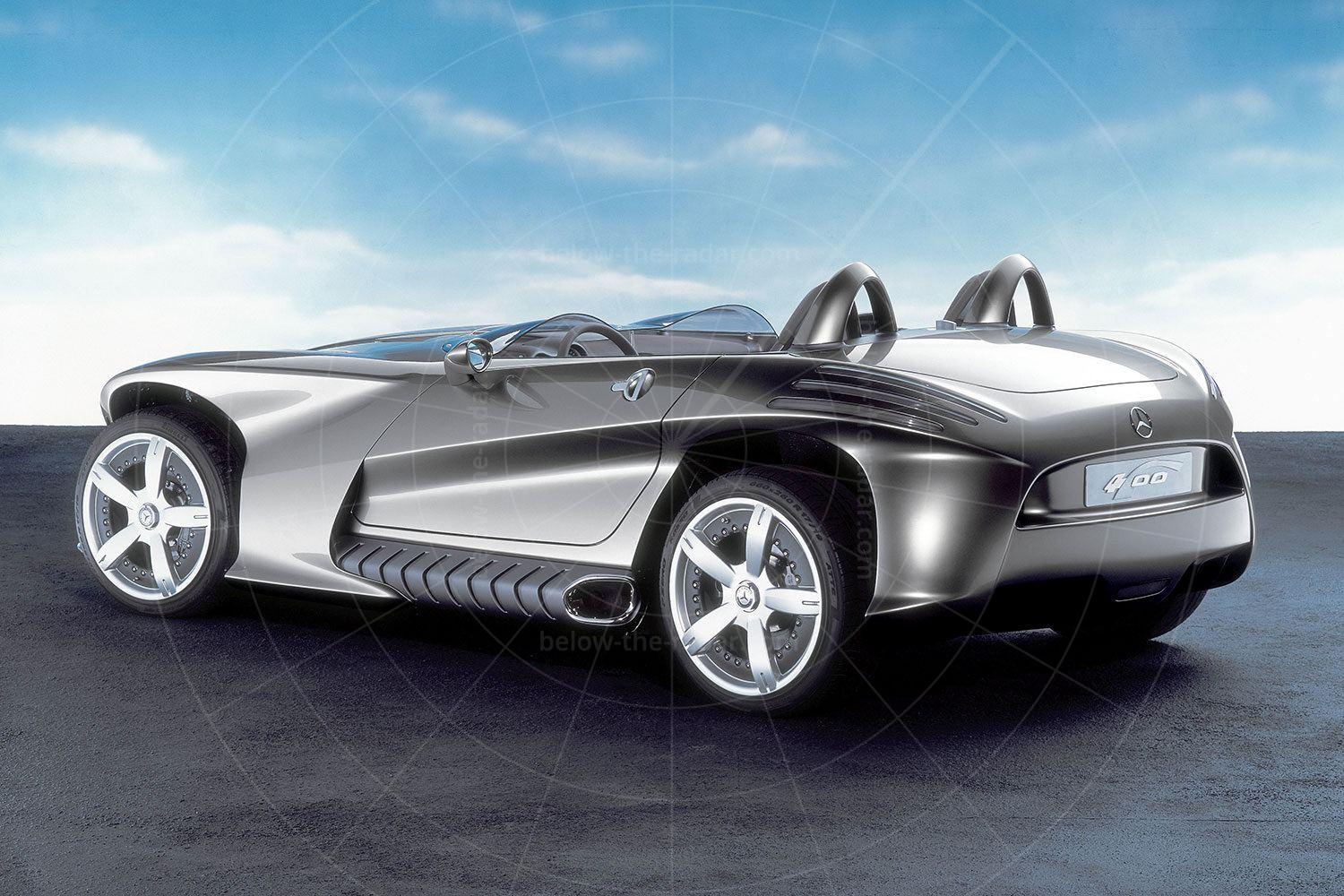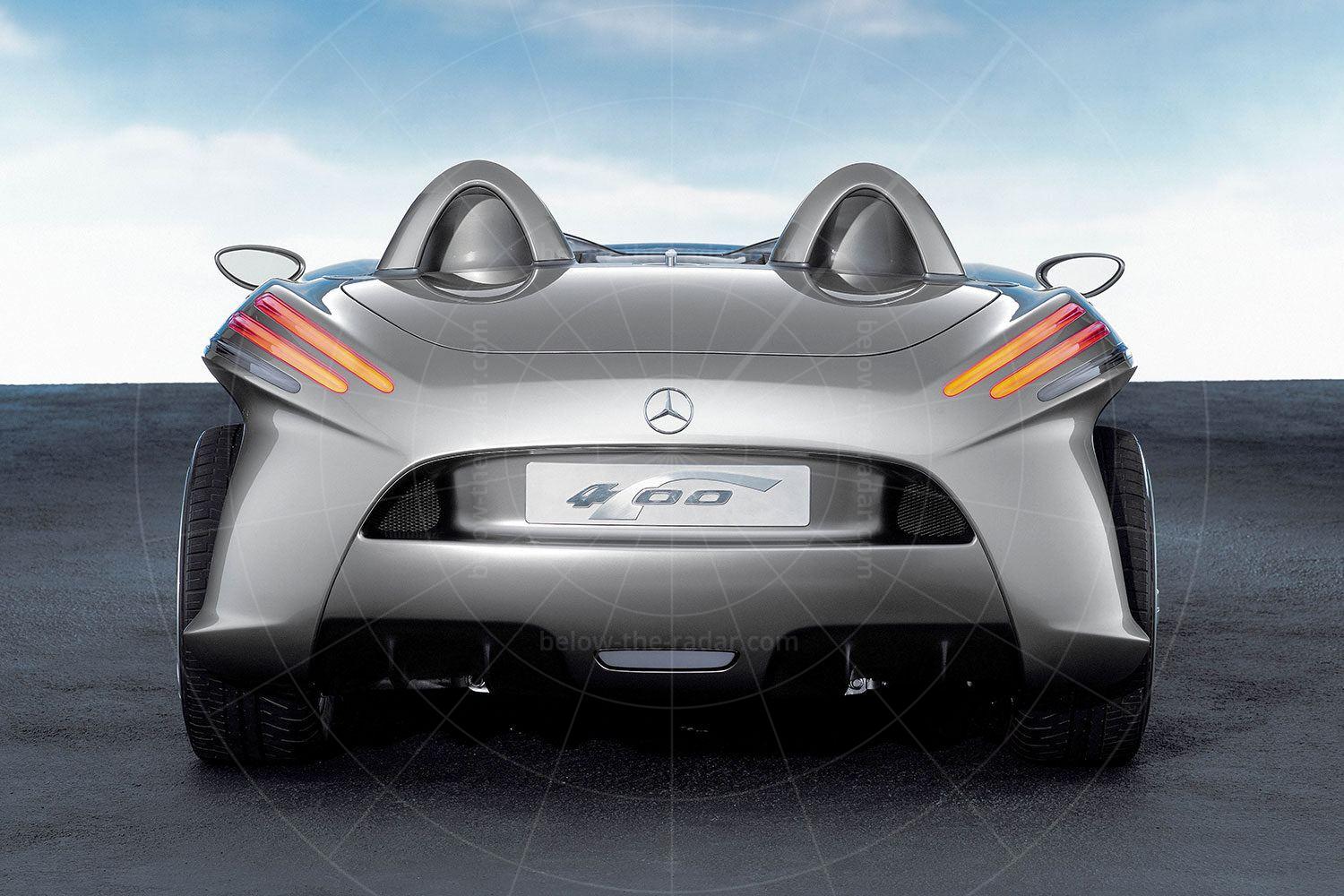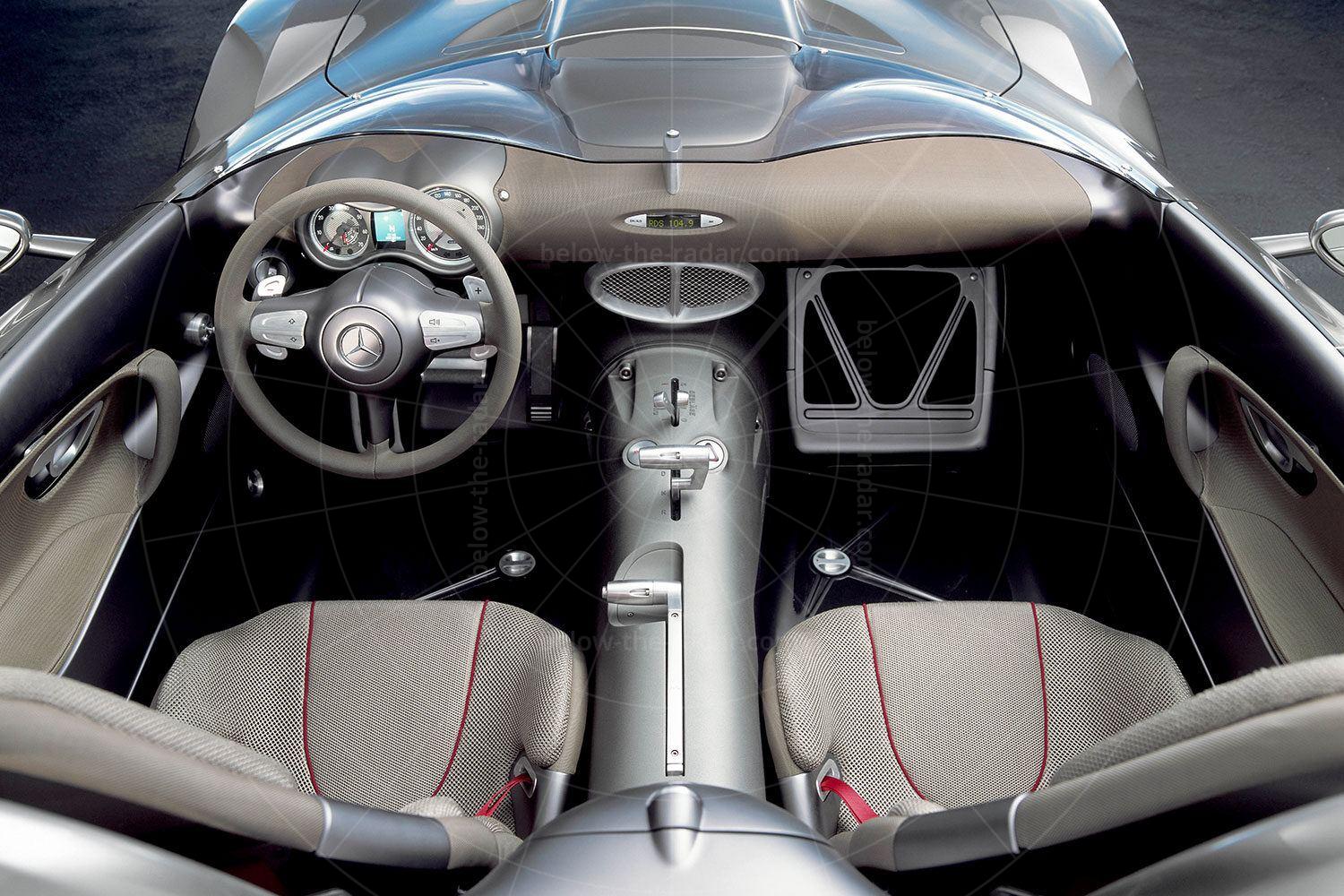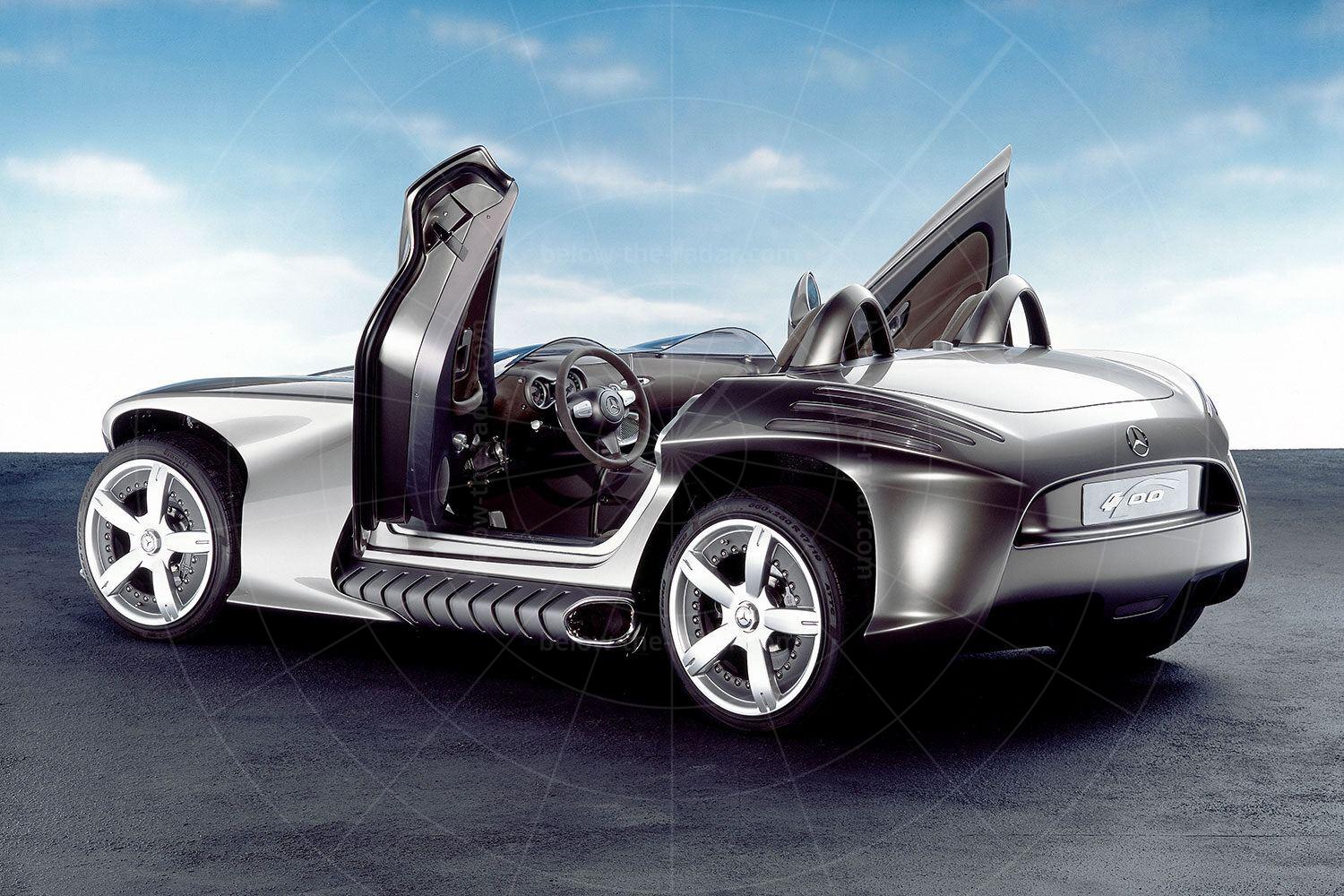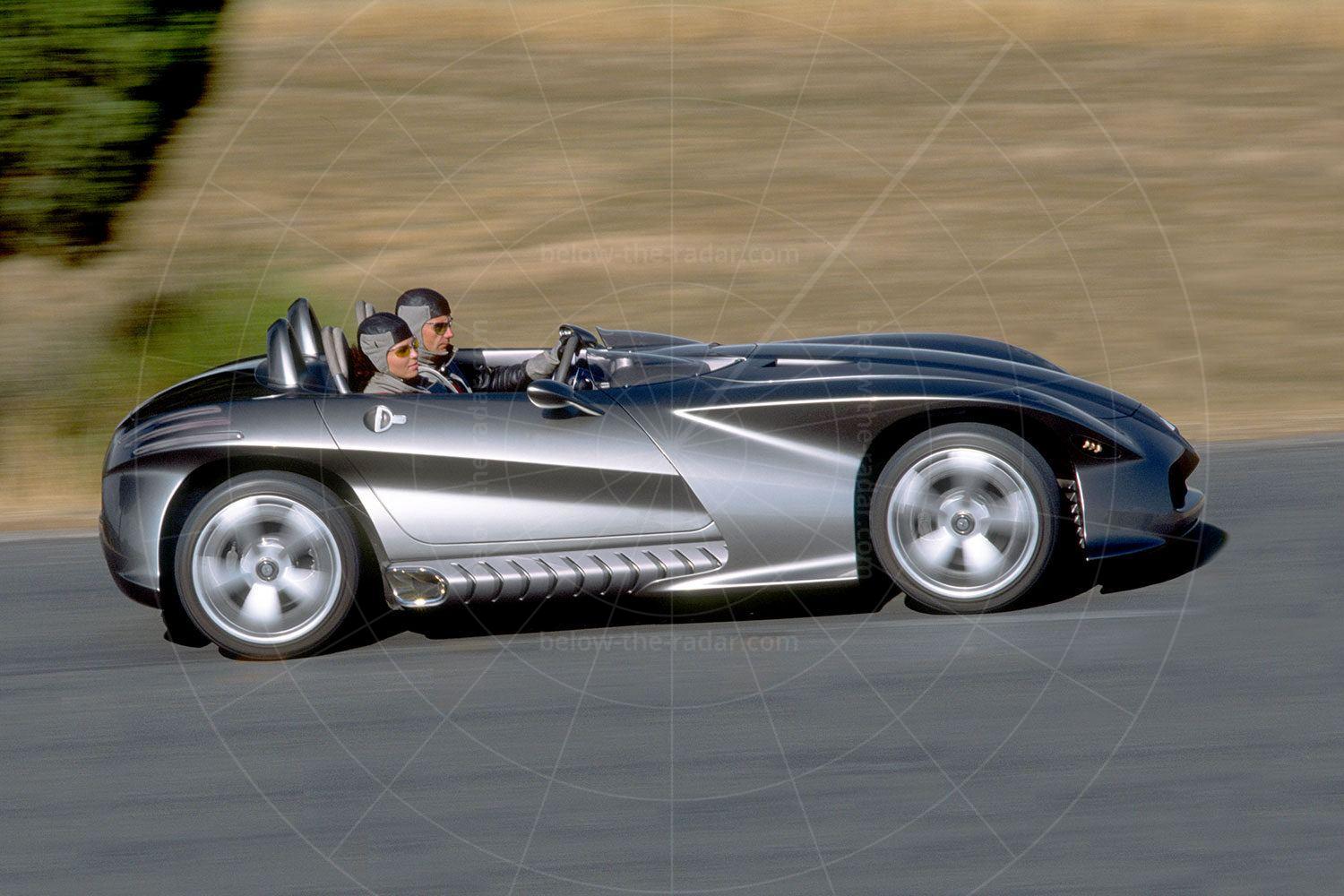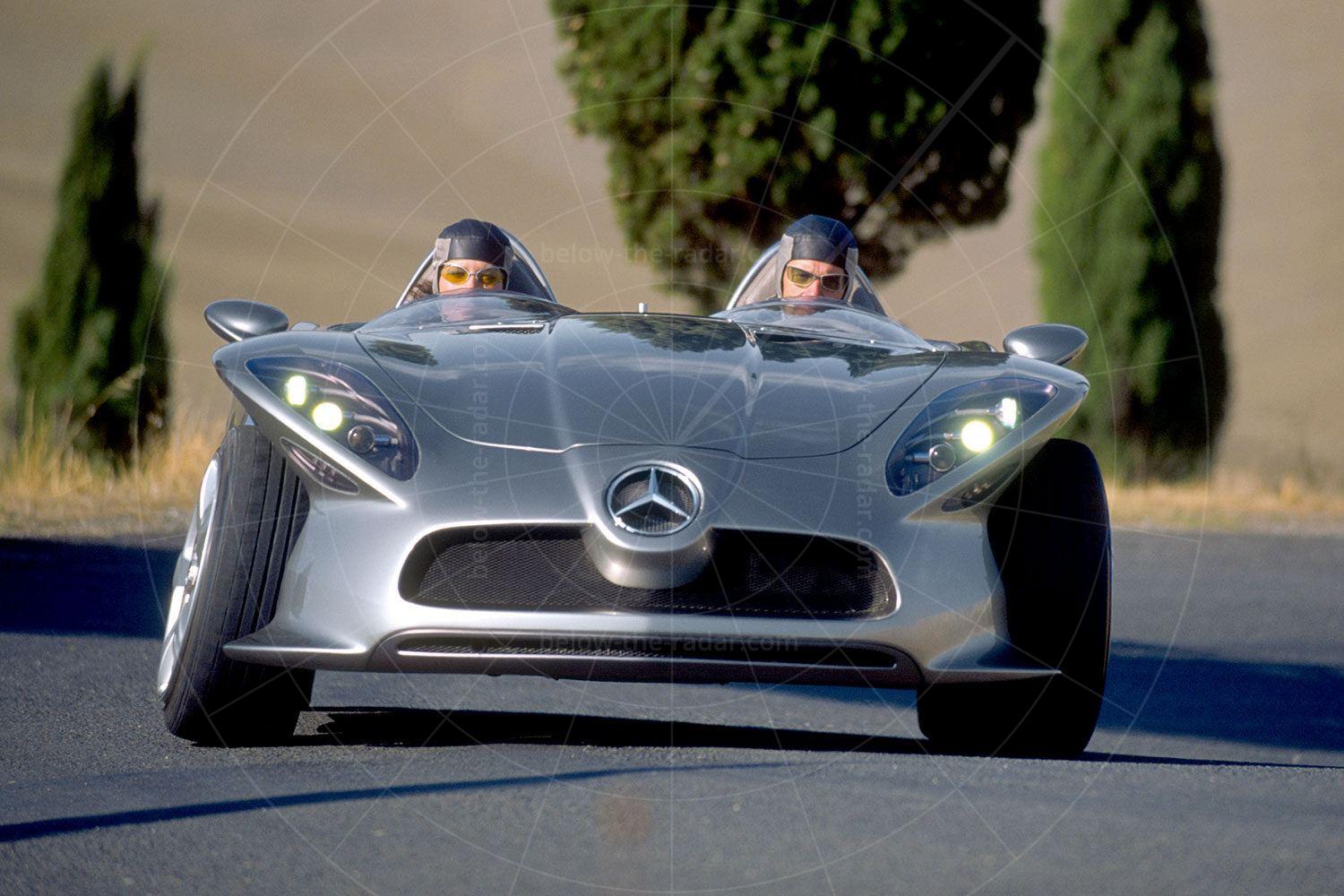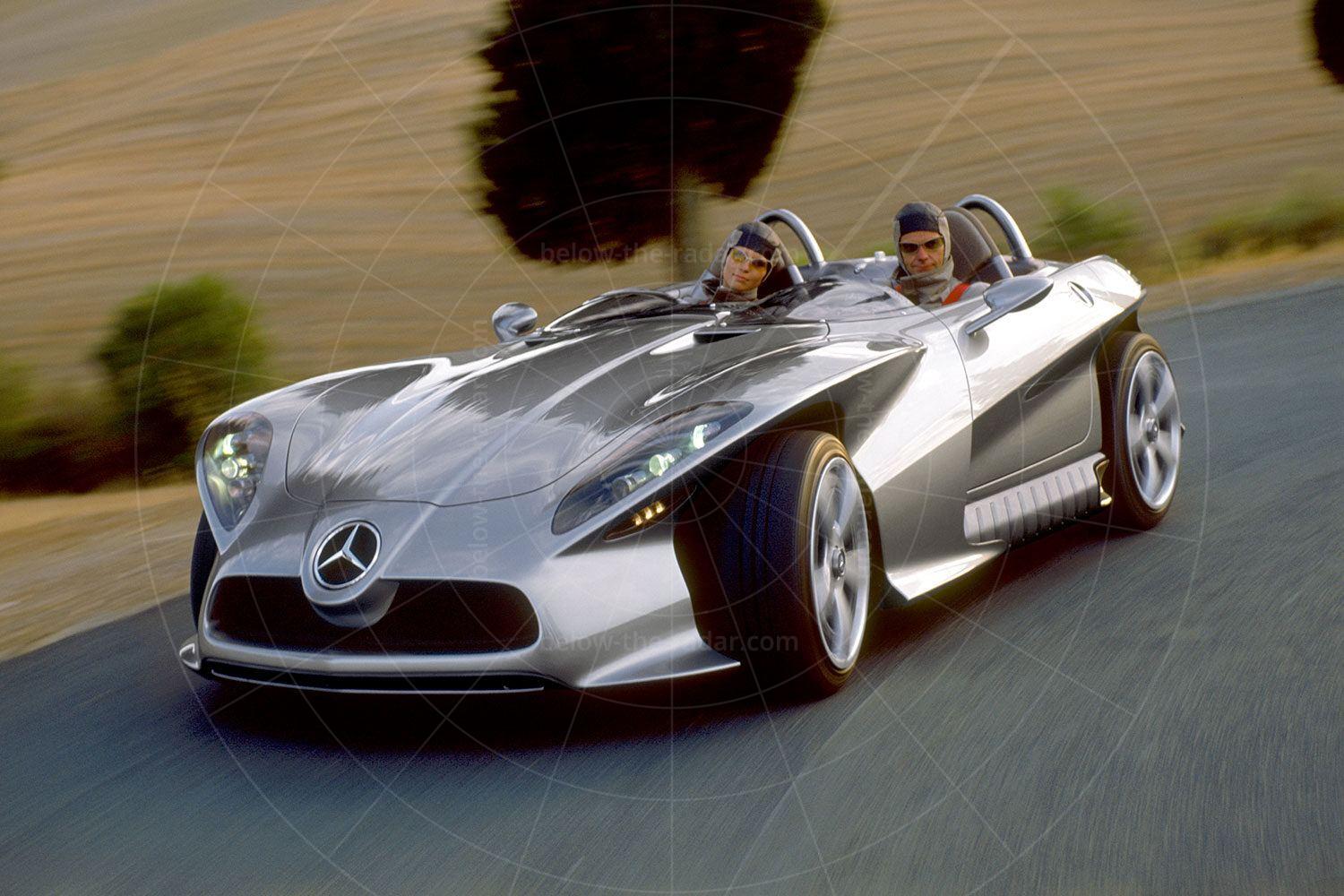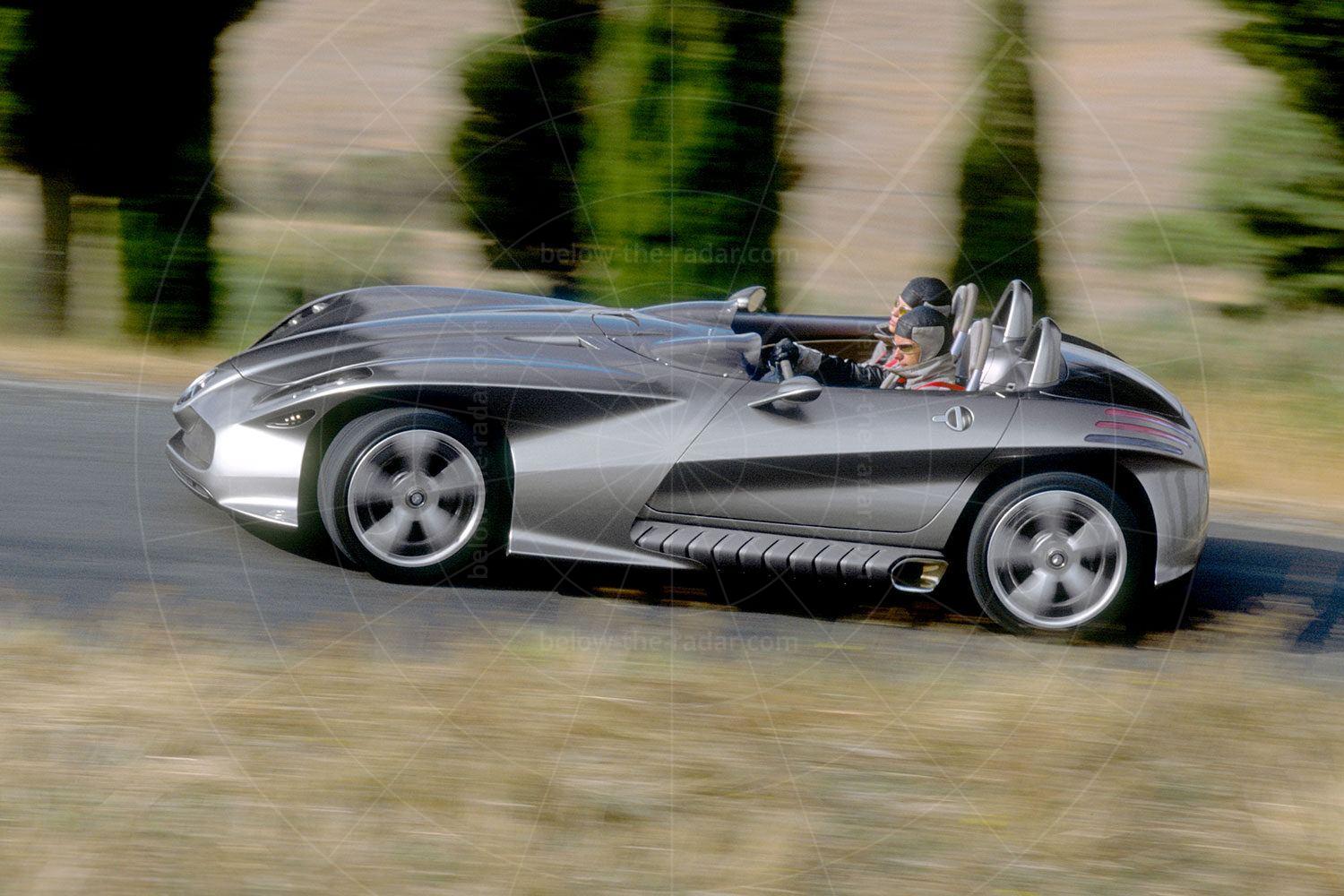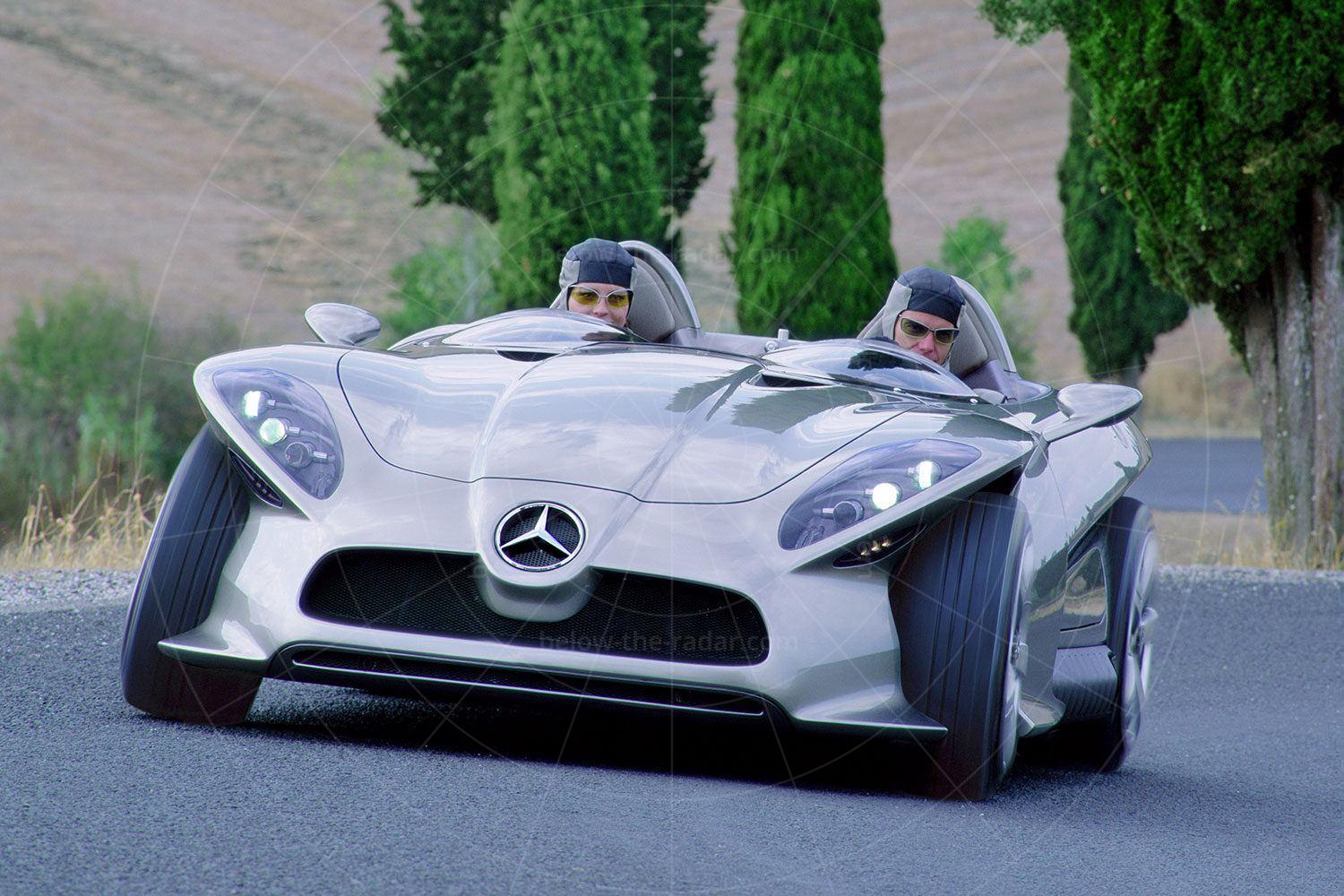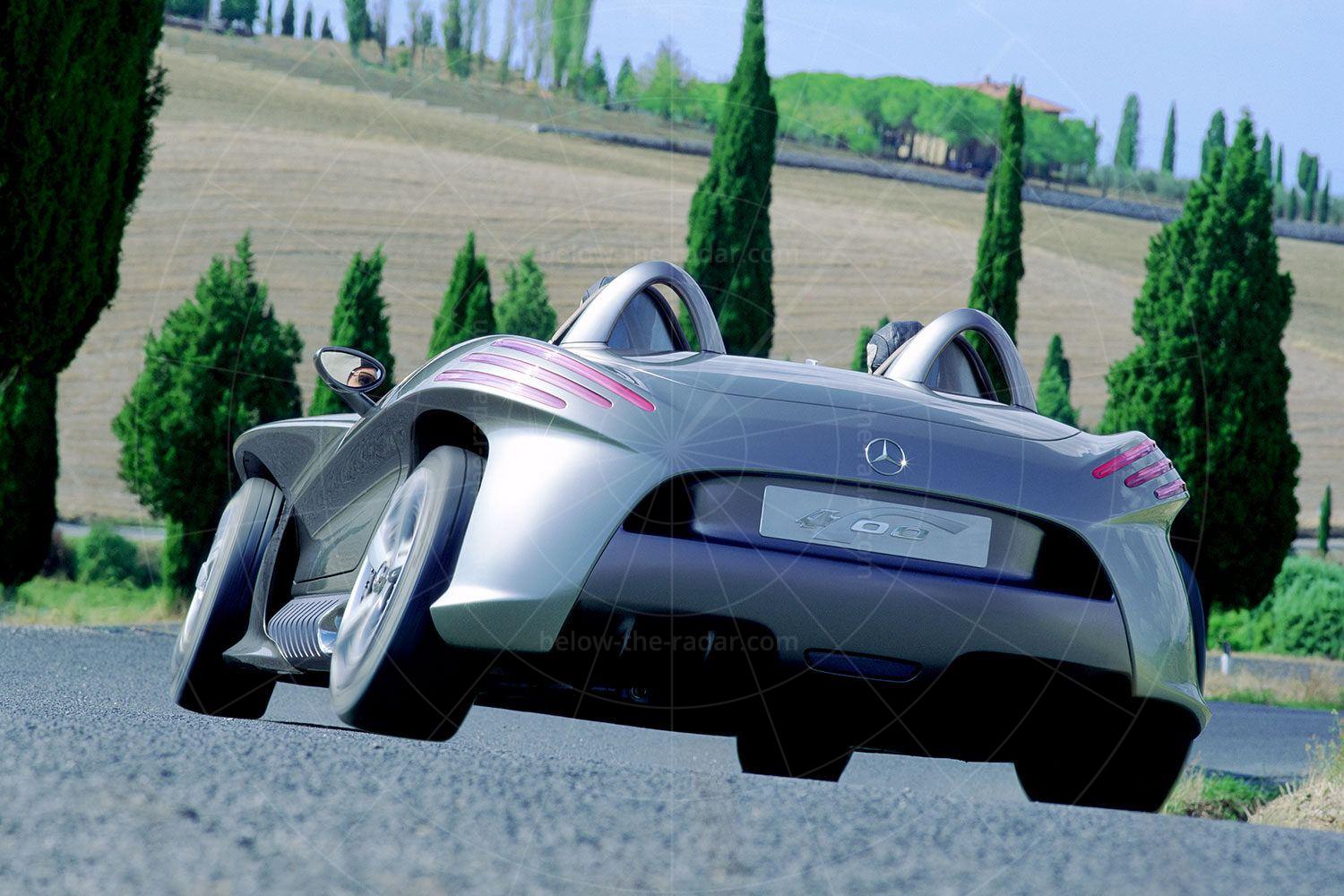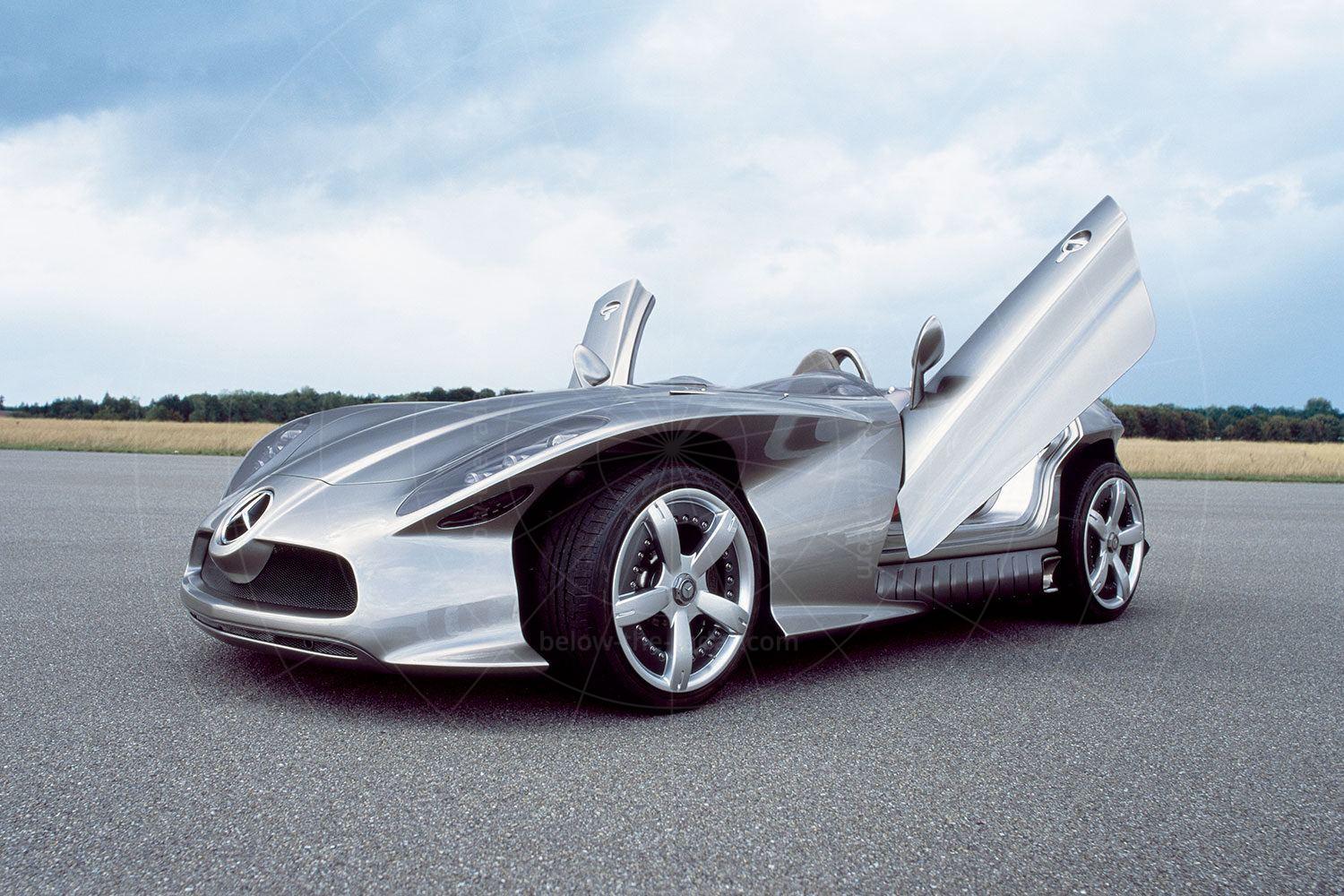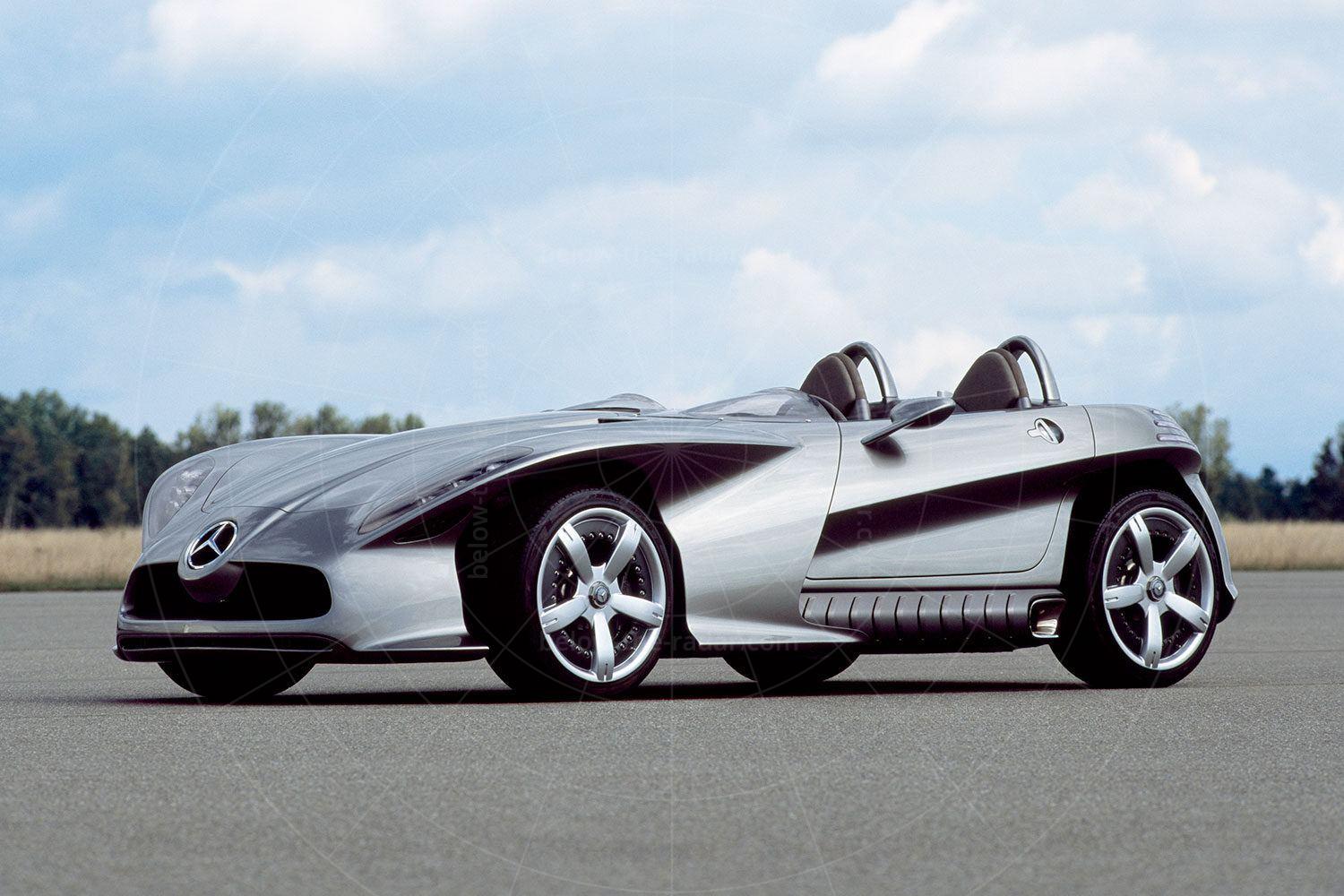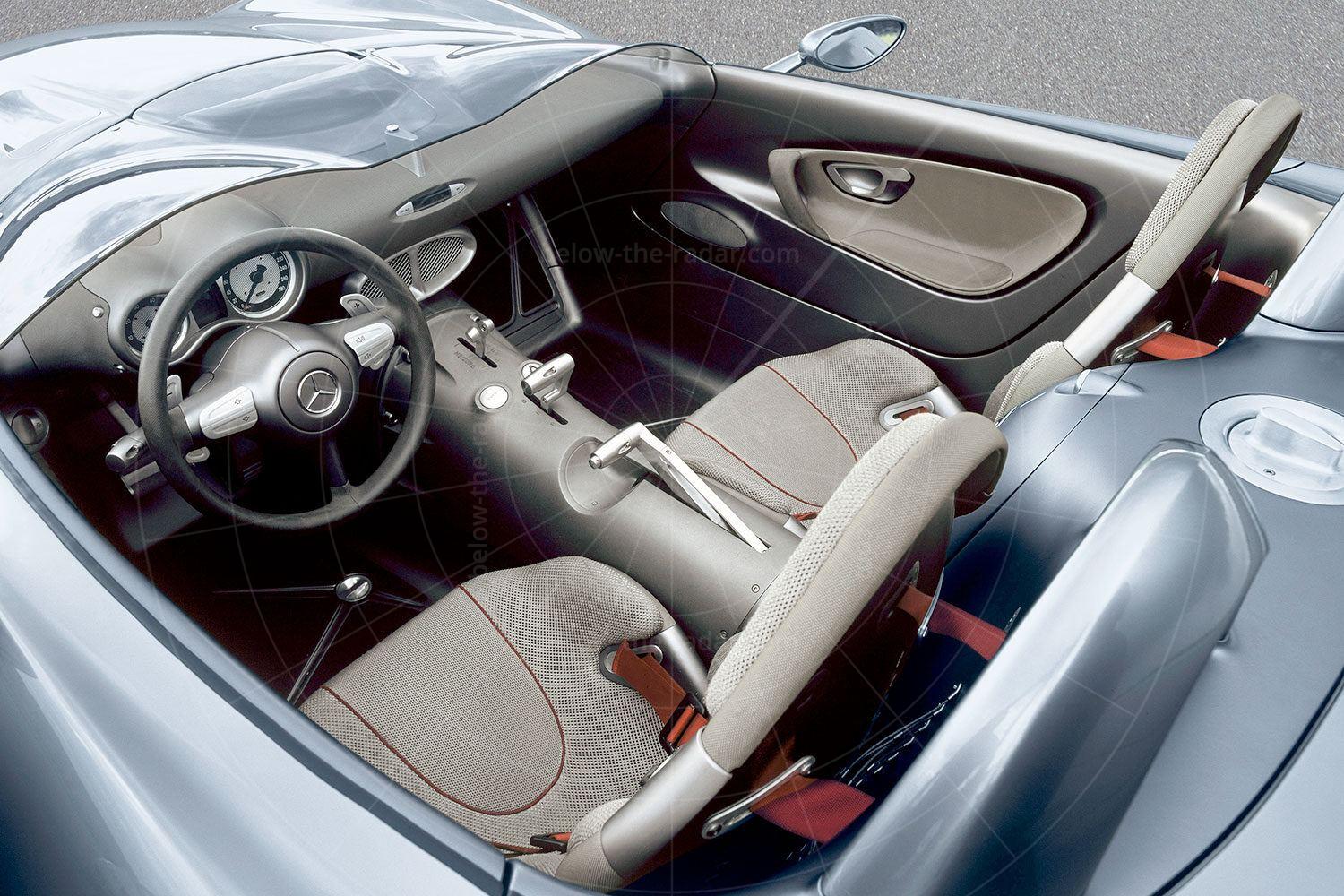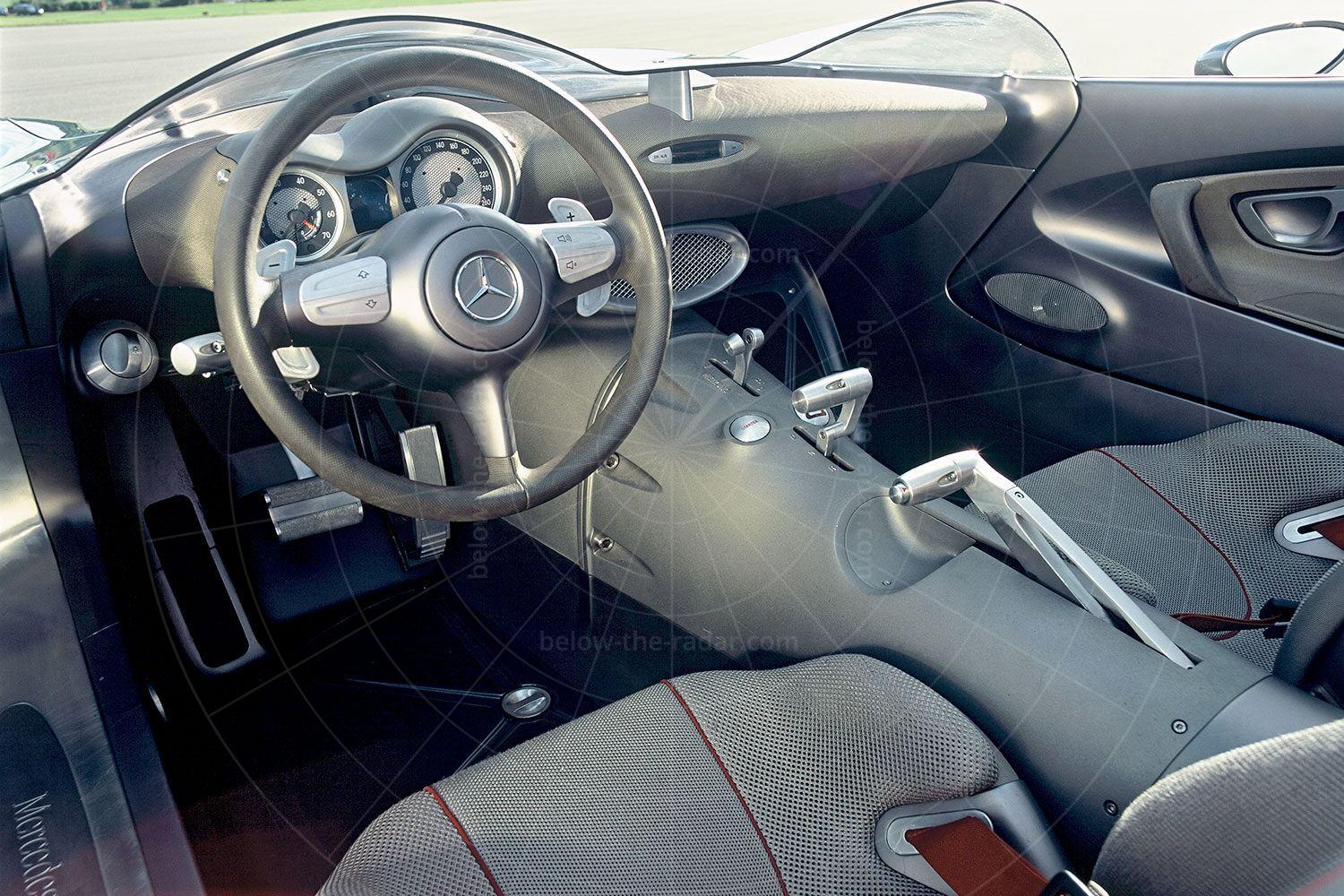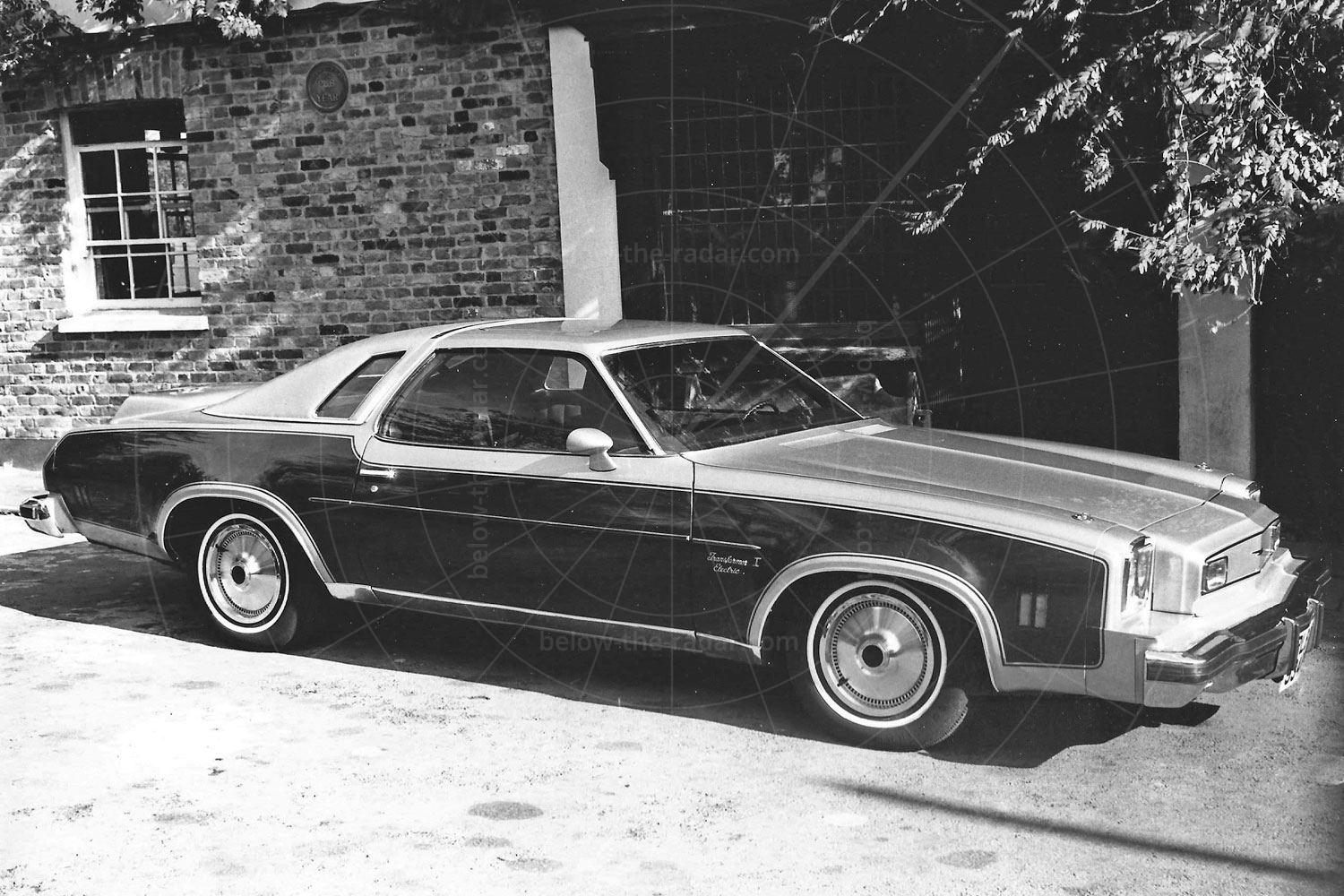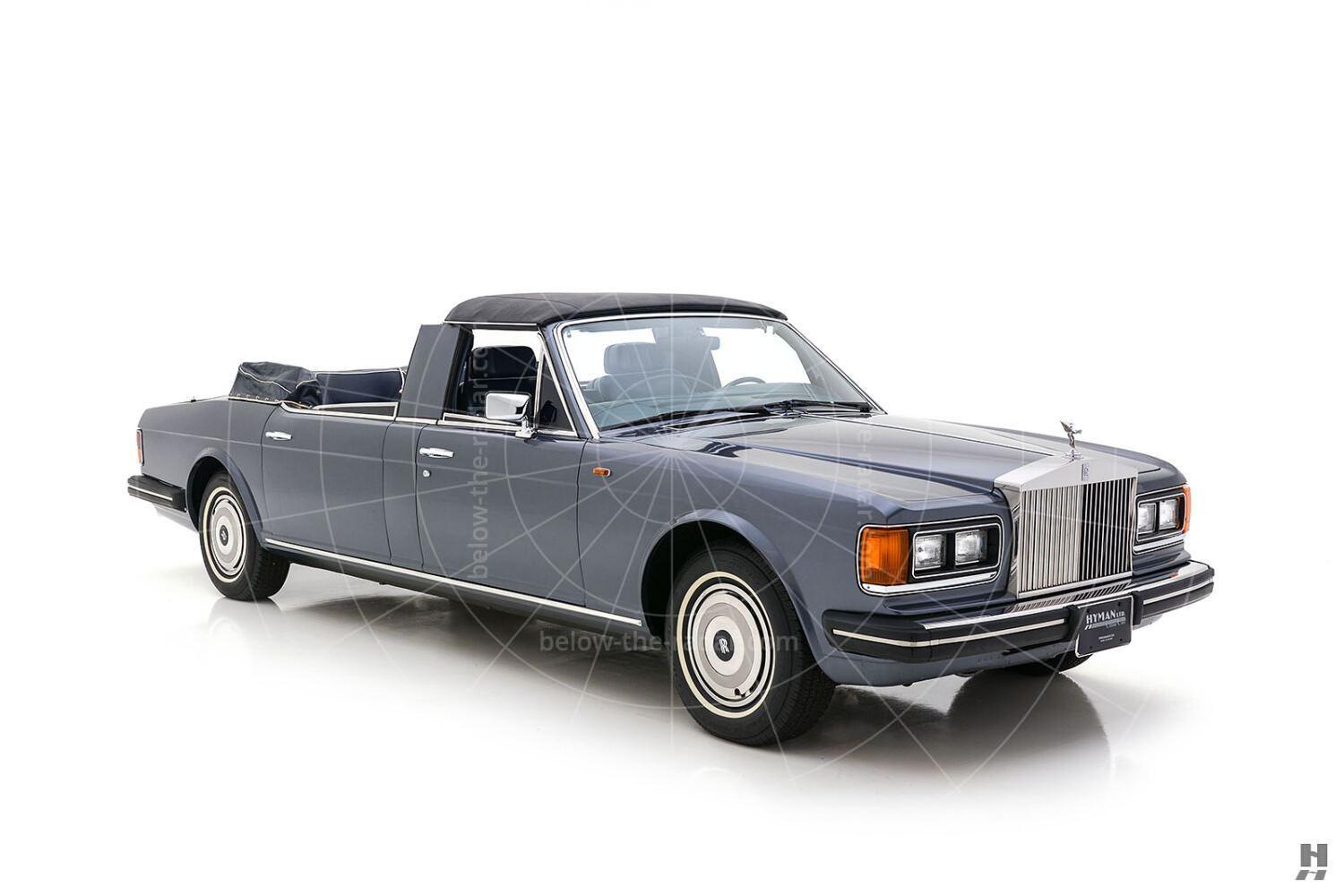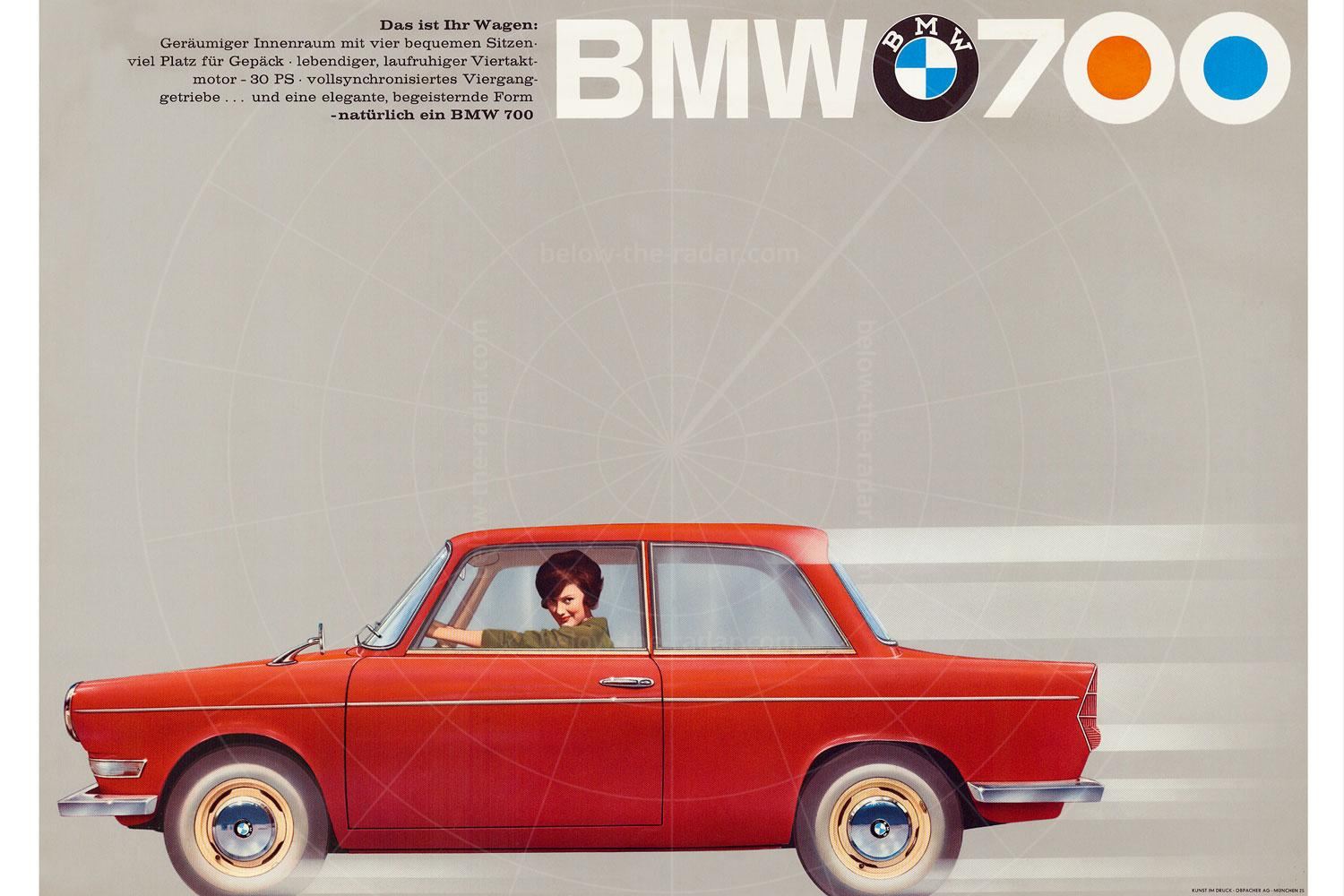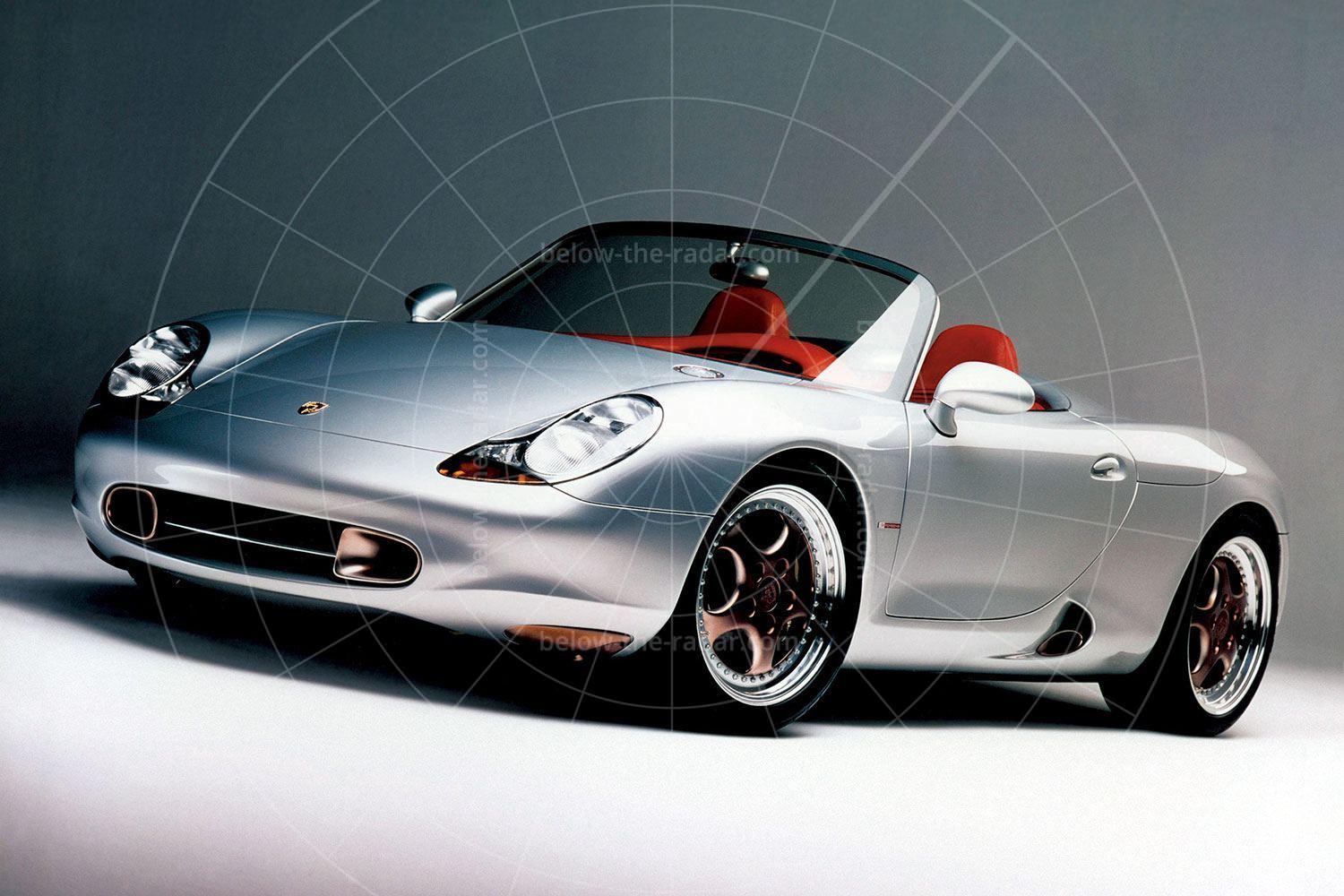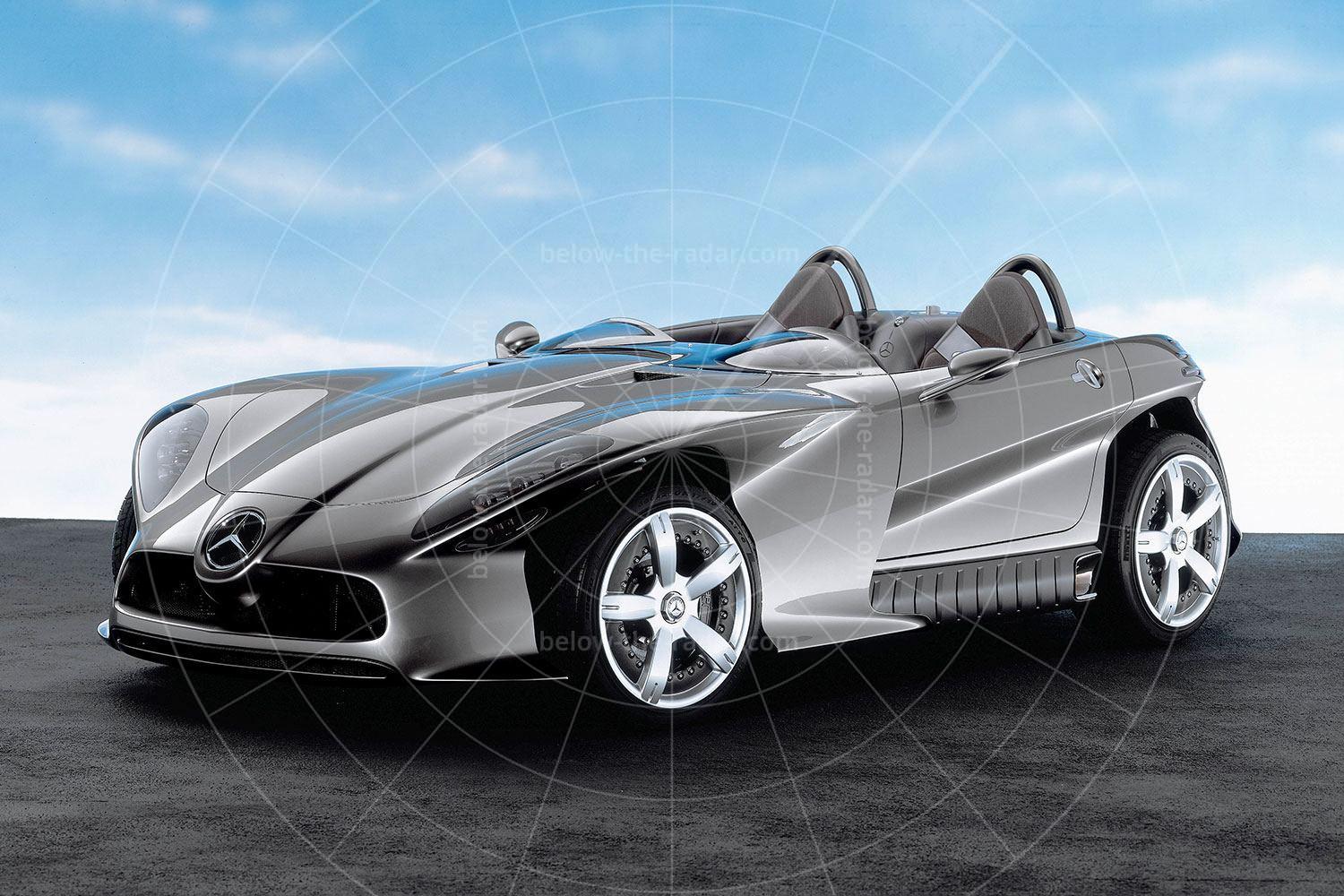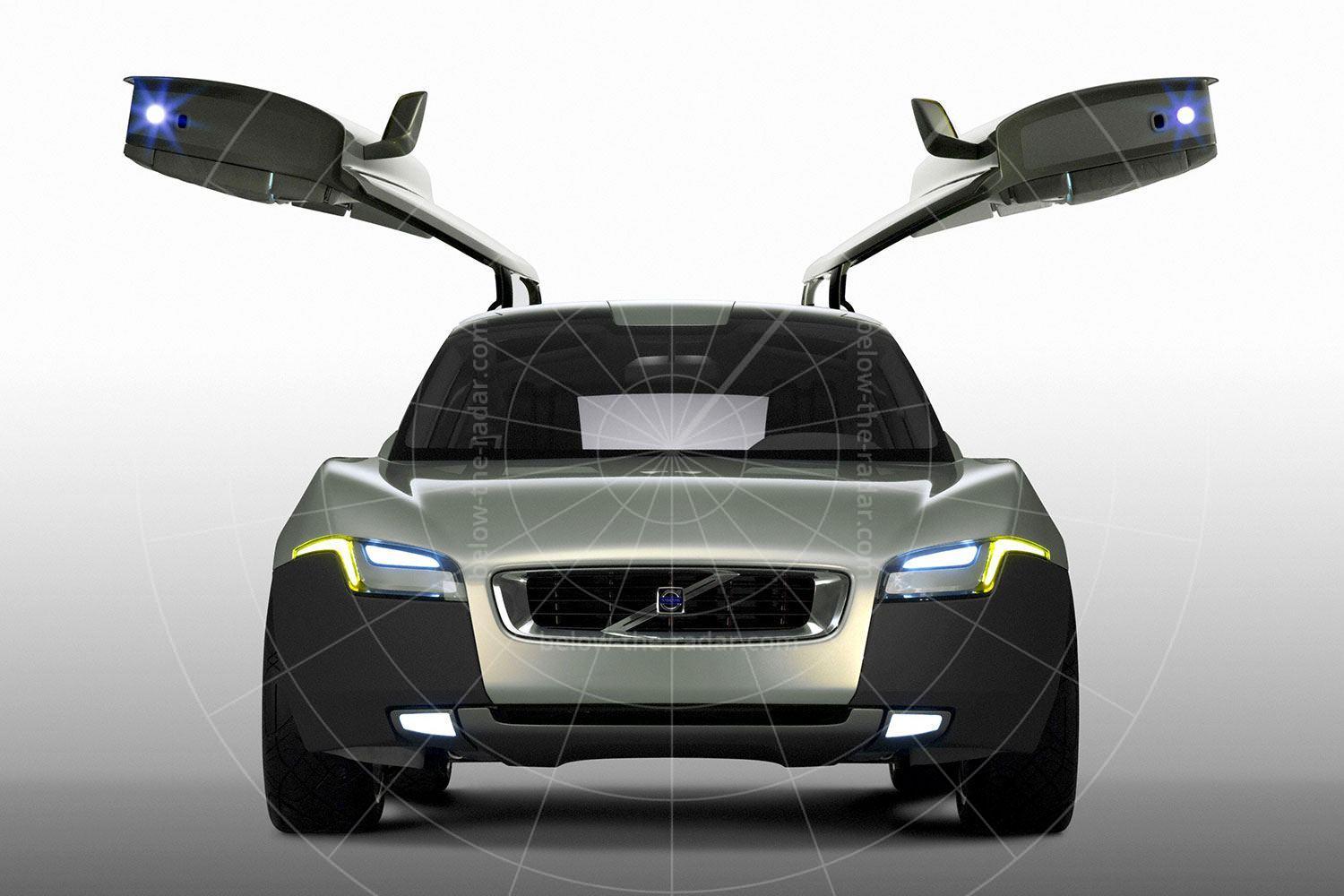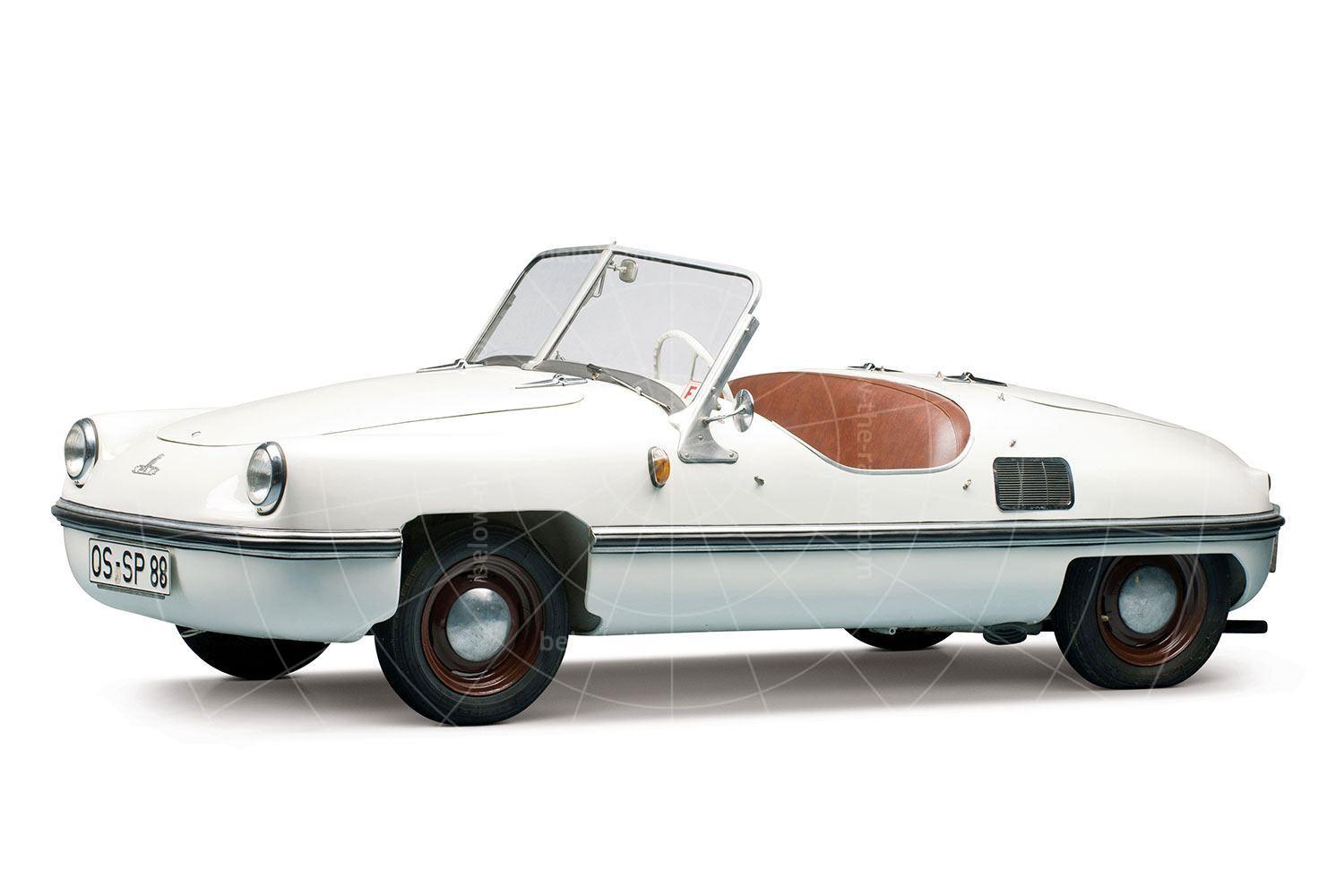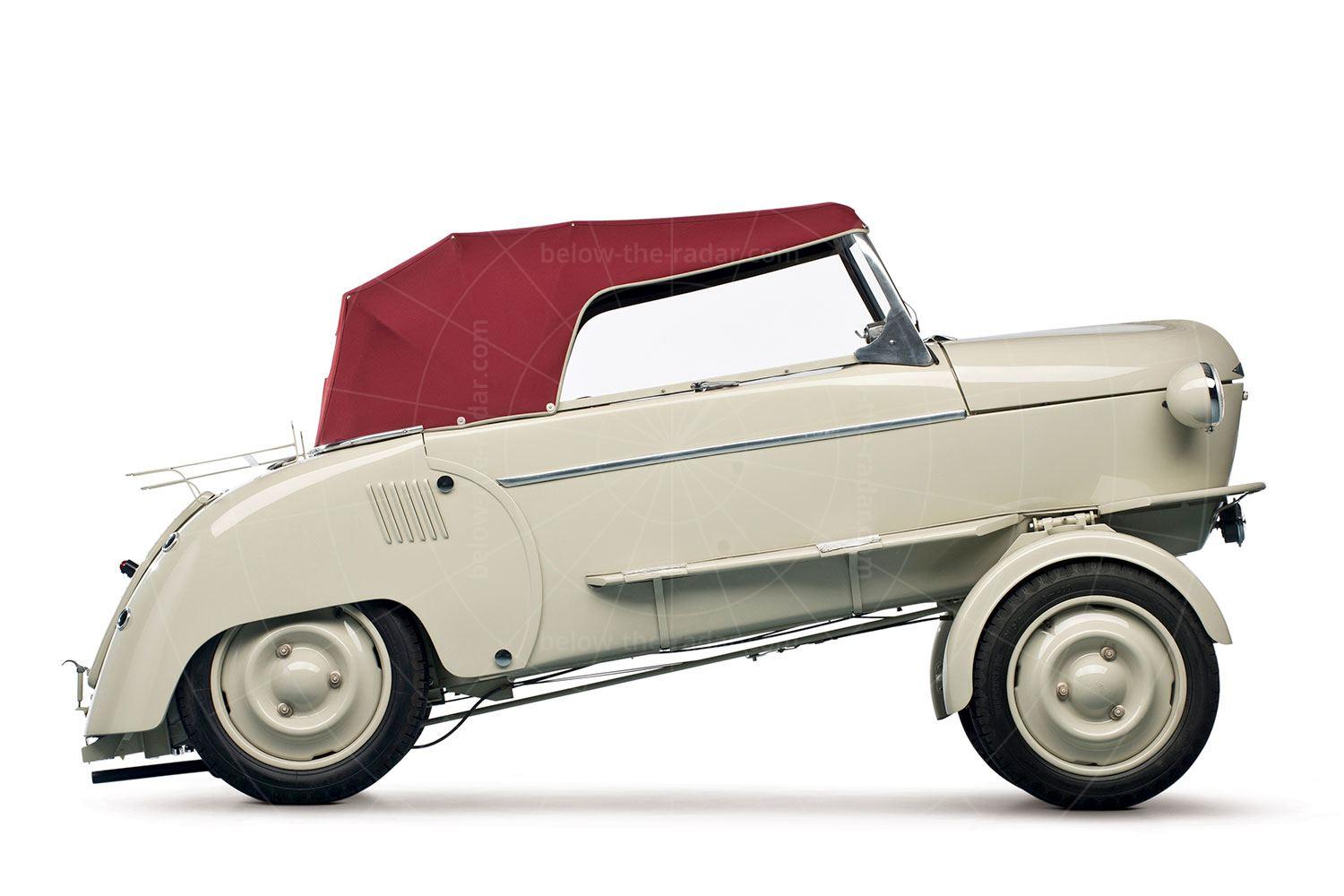Few car makers are as conservative as Mercedes, but every so often this huge German conglomerate lets its hair down and produces something so utterly barking that it shows there’s a great sense of humour somewhere inside the corporation. However, as with all great design studies, there was a serious side to the F400 Carving too; it incorporated some technologies that were wacky to say the least, but which could also be refined to make Mercedes’ production cars better in a multitude of ways.
The F400 Carving followed in the tyre tracks of the F100 of 1991, the F200 Imagination of 1996 and the F300 Lifejet which was unveiled in 1997. While the F100 was a radical MPV and the F200 a technologically advanced coupé, the F300 was a three-wheeler sports car quite unlike anything ever to come out of the Mercedes factory. So in some ways the F400 Carving was a bit less radical than what had gone before. But not much.
As with the previous concepts, the F400 showcased radical chassis technologies aimed at producing cars more dynamically capable and safer than ever before, which is no mean feat when you consider what a great record Mercedes has in the latter area.
As well as those radical chassis technologies, the F400 also experimented with lightweight materials in its construction, cutting-edge design elements and some features which were so advanced that when the F400 was unveiled, it wouldn’t have been able to be driven on public roads because legislation was still to be passed that would allow the car to be road-legal. In the event, some of those technologies would go on to be fitted to some of Mercedes’ production cars.
Mercedes didn’t hold back when it came to packing the F400 with technology; just about every aspect of it was a break from the norm. Indeed, Mercedes referred to it as a mobile research laboratory, and while some of its features were too madly impractical to ever be used in a production car, there were plenty of real-world technologies in there too.
For example, the fibre-optic headlamps were more compact but much brighter than conventional units. The carbon ceramic brakes were also far more efficient and longer lasting than their more usual steel equivalent, but also far more costly.
However, it was that radical suspension design which was the key to the F400; the clue was in the name F400 Carving. Just as when a skier leans into the corner for greater stability when turning at speed, the F400 featured computer-controlled adjustable suspension which allowed the wheels to lean by up to 20 degrees from the vertical. When combined with newly developed tyres, there was up to 30% more lateral stability available compared with a conventional system, which was a major benefit to safety.
Those tyres not only incorporated an asymmetrical tread pattern, but there were two of them per wheel. On the outside was a 19-inch tyre for when the F400 was being driven in a straight line, while on the inside of the wheel there was a 17-inch tyre for when the car was being cornered.
Other technologies packed into the F400 included an electro-hydraulic braking system, electronic stability programme, a by-wire electric steering system (with no mechanical linkages) and a 42-volt electrical system.
To go with all of this cutting-edge technology the F400 Carving featured styling that was unconventional to say the least; the designers found it extremely tricky to come up with an appealing exterior design when there was such radical chassis technology to be accommodated. They had to come up with a concept that allowed the wheels enough room to move during cornering with active camber control on the one hand, while also ensuring that the car also looked good with the wheels in the normal position. Whether or not they succeeded is up to you to decide…
Taking these criteria as the starting point, a competition was launched, inviting young designers from the Mercedes studios in Germany, Japan and the USA to come up with ideas. A flood of suggestions came in, ranging from utopian supercars to comical fun-cruisers and from four-seater cabriolets to pure driving machines with one-man cockpits. Bearing in mind what won, it would be fascinating to see some of the designs that didn’t make the grade…
The F400 was intended to evoke thoughts of a perfectly proportioned and superbly conditioned athlete; lean, muscular and aggressive. From some angles it also looked a bit lop-sided, and even more so once the doors were opened; they rose up sharply in a nod to the legendary 300SL Gullwing, launched exactly half a century before the F400.
Inside it was a minimalist-fest, with little more than the bare essentials. There wasn’t even a proper windscreen; instead there was an aeroscreen. A pair of dials in front of the driver was just about all the instrumentation on offer, but while it was pretty stripped-out it reeked of quality thanks to the alloy details that abounded. But if there was one thing that really signalled the F400’s intent, it was the four-point race harnesses fitted to each of the two seats.
| Vital statistics | |
|---|---|
| Debut | Paris 2001 |
| Engine | Front-mounted, 3199cc, V6 |
| Transmission | 6-speed sequential manual, rear-wheel drive |
| Power | 221bhp |
| Torque | 232lb ft |
| Top speed | 150mph |
| 0-60mph | 6.9 seconds |

